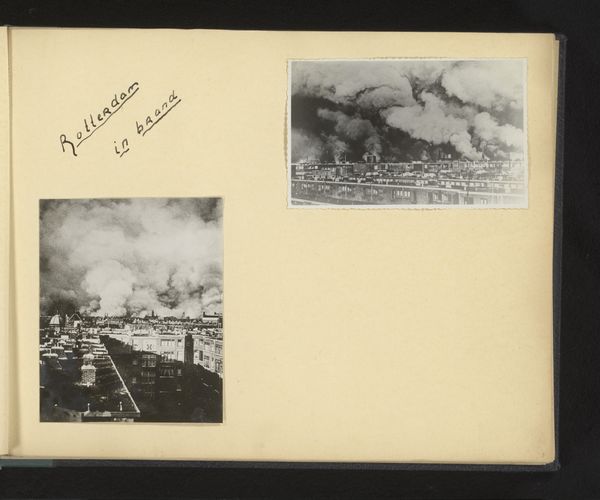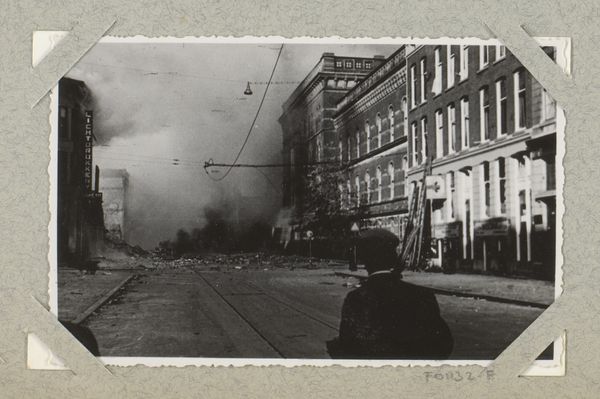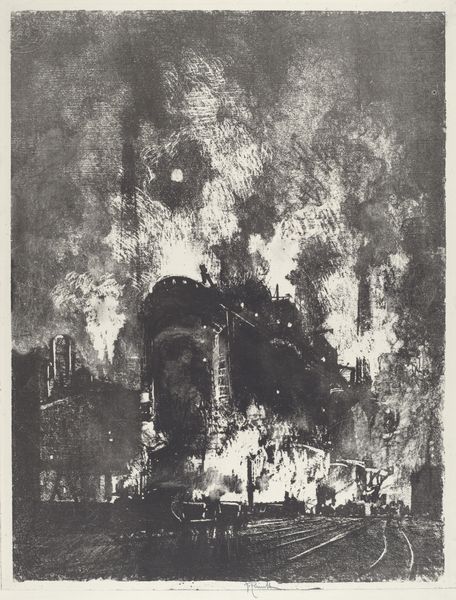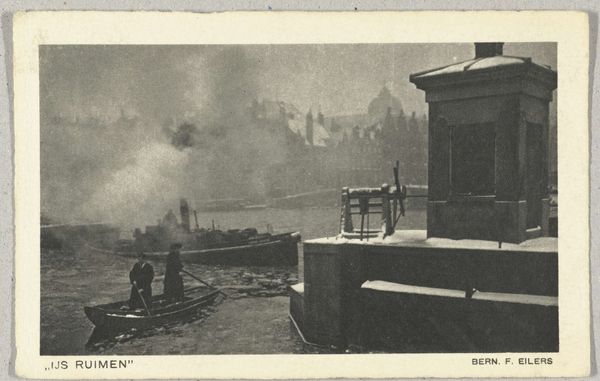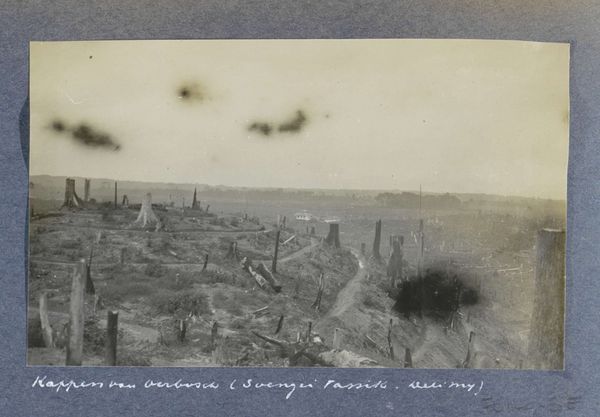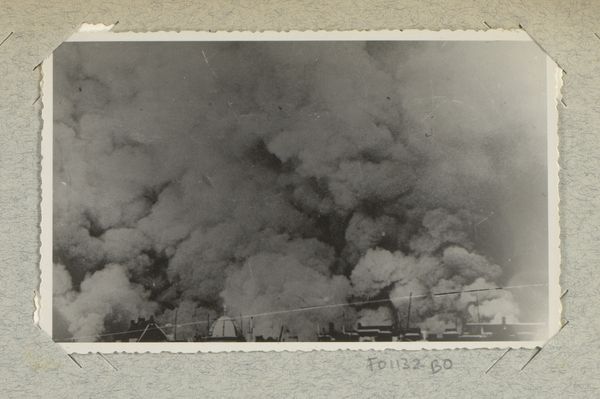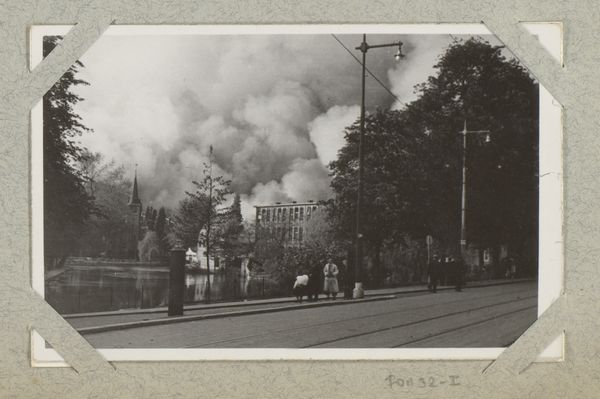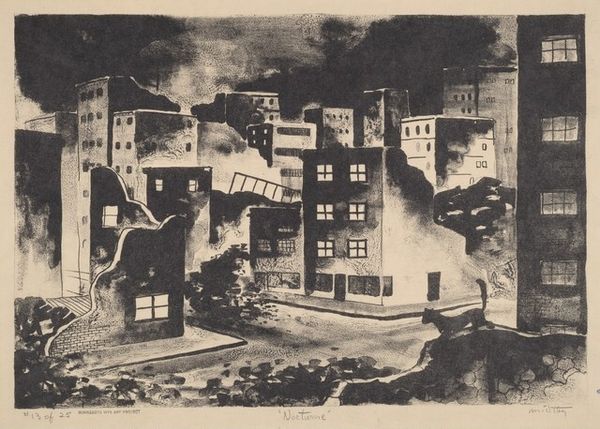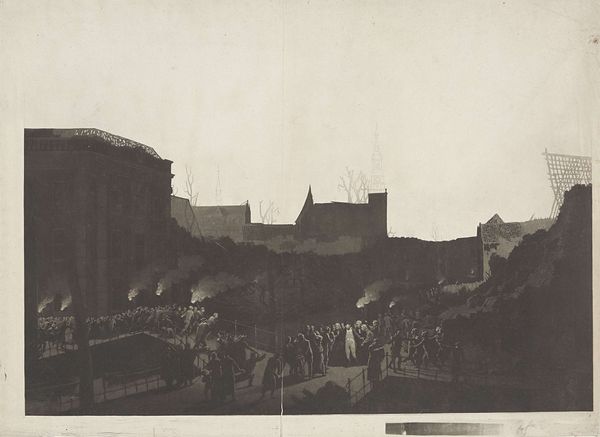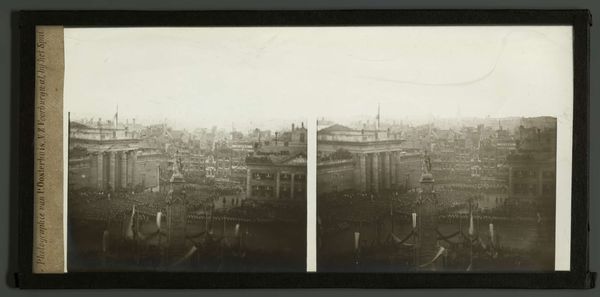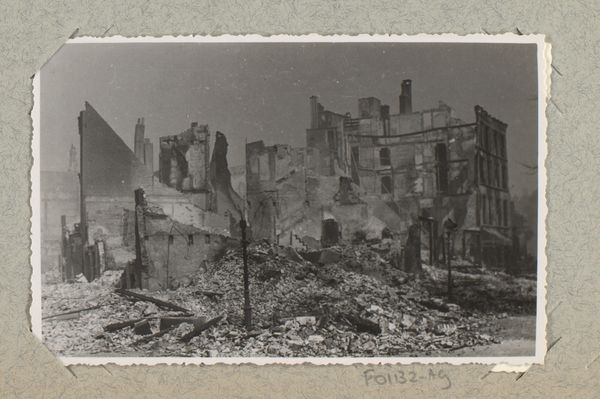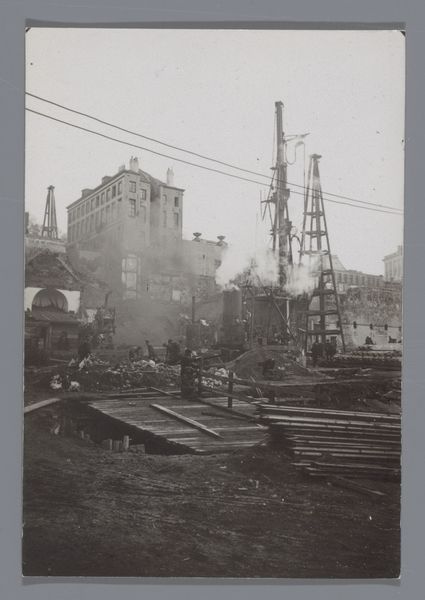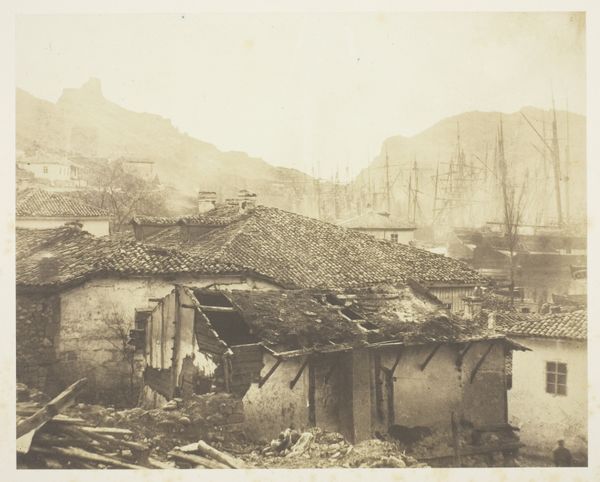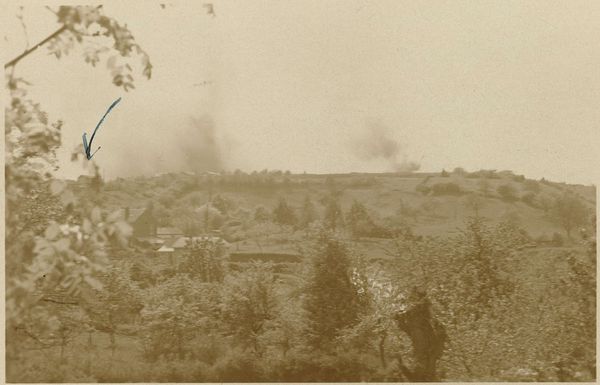
Dimensions: 24 × 18.3 cm (image); 45.8 × 35.5 cm (mount)
Copyright: Public Domain
Curator: This gelatin-silver print, taken by Arnold Genthe in 1906, is simply titled "San Francisco Earthquake." Editor: It's strikingly beautiful, even with such a devastating subject. The hazy, almost ethereal quality of the smoke…it gives the scene a strangely romantic feel despite the destruction. Curator: Genthe wasn't a photojournalist by trade. He primarily photographed the social elite of San Francisco. This photograph emerged almost by accident, taken with borrowed equipment and limited resources as he documented the aftermath of the disaster. Editor: Look at the people in the foreground. They are arranged as though posing for a portrait, even seated. Yet above them, billowing clouds rise and envelop the city, underscoring how frail human activity is against forces of nature. Curator: Absolutely. Consider the socio-economic implications here. These people observing the fire, largely look as though they belong to an elevated societal stratum. This distance, both physical and social, speaks volumes about the disparate experiences within San Francisco at the time. Disaster impacts communities differently. Editor: You are absolutely right. Thinking from a structural perspective, the layers create symbolic separation—the observers distanced on their perch, then the city, and lastly the enveloping chaos. Light and dark areas add depth and complexity as well, suggesting a stratified narrative. Curator: Genthe managed to capture the scale of the destruction, and also provides a critical glimpse into the societal dynamics. The work is a fascinating intersection of documentary impulse, social observation, and the artist's existing portrait practice. This wasn't a prepared work. Editor: Indeed, he’s caught a particular, somewhat discomfiting tableau—a moment of spectacle from a comfortable distance. Even the print's tonality contributes; shades soften what we understand was a violent series of events. It asks questions about viewing tragedy and the human impulse toward it. Curator: Ultimately, this work highlights the role of art and documentation in understanding the politics of disaster. And although unexpected, it also highlights how existing practices are used, molded, and adapted in the heat of the moment. Editor: A haunting piece; so beautifully composed yet so deeply unsettling. It elegantly draws viewers into contemplating both devastation and our position within larger narratives of humanity and catastrophe.
Comments
No comments
Be the first to comment and join the conversation on the ultimate creative platform.
